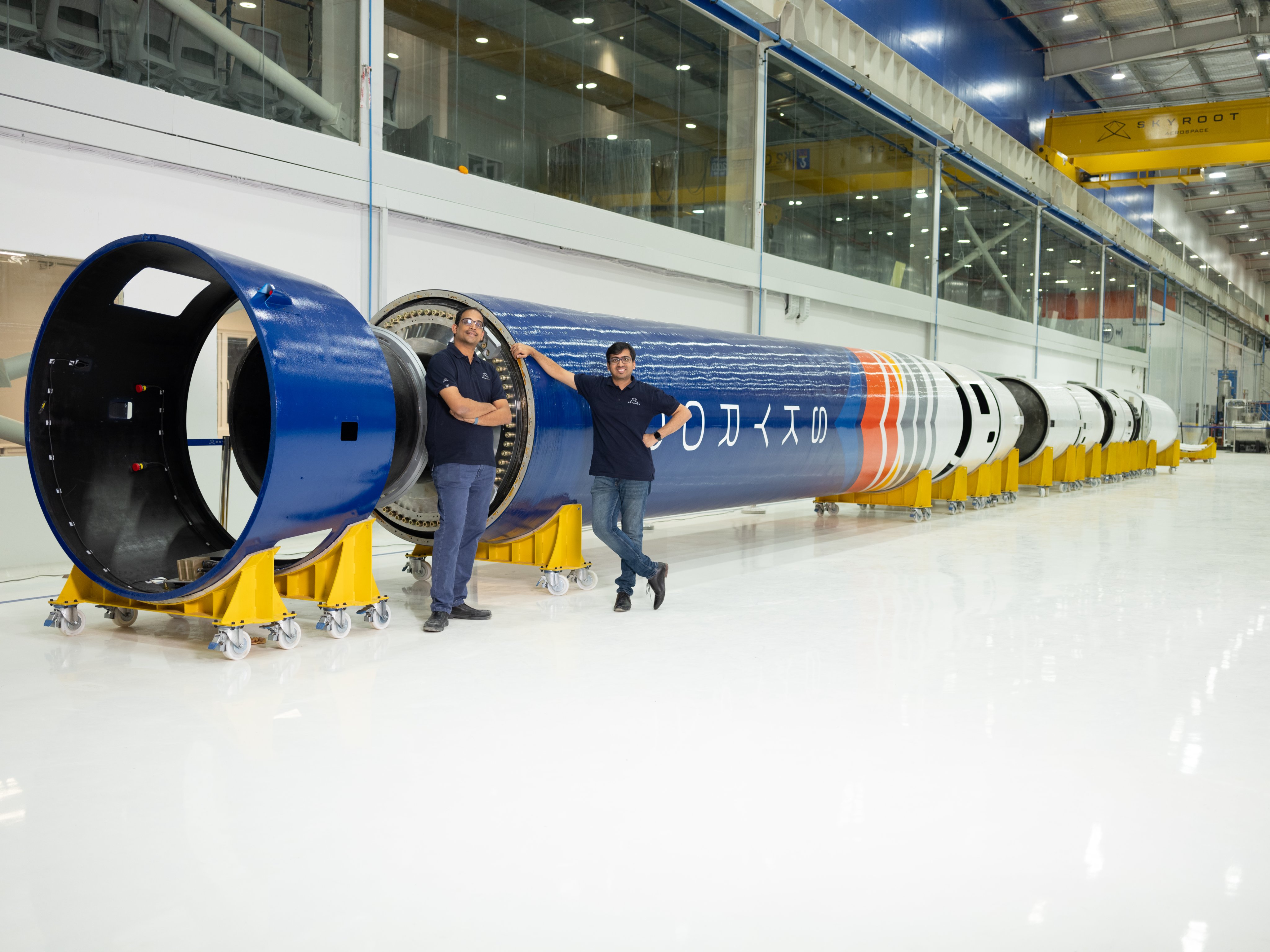Overview
In a noteworthy achievement for the nation’s space sector, Skyroot Aerospace, India’s pioneering private space company, has revealed the Vikram-1 Orbital Launch Vehicle, moving India closer to a future where space exploration is within reach for all.
Dr Jitendra Singh, the Minister of State for the Ministry of Science and Technology, inaugurated the Vikram-1 rocket from the Hyderabad-based startup. Additionally, he also inaugurated the startup’s new headquarters named MAX-Q.

The Union Minister highlighted the significant progress in the space sector due to its “unshackling”, leading to a “quantum leap” in startups, and that Skyroot had emerged as a prime example and a role model.
Skyroot Aerospace celebrated the inauguration of its state-of-the-art design, testing, and manufacturing facility spanning 60,000 sq. ft and the grand unveiling of the Vikram-1 commercial rocket at GMR Aerospace and Industrial Park in Mamidipally, Rangareddy district.
The minister underscored the importance of this achievement, stating that Prime Minister Narendra Modi had provided the opportunity by liberalising the space market four years ago. He mentioned the presence of 150 startups in the space sector, emphasising that despite possessing talent and industry, the country had to wait for seven decades due to self-imposed restrictions to realise its potential.
The minister highlighted the need for a synergy between public and private institutions to explore new avenues, projecting the overall market for the country to reach $40 billion to $100 billion by 2040, a massive boost from the current $8 billion.
He mentioned the global anticipation for the results of the Chandrayan-3 Mission. He noted that after trailing in technology by at least 15 years, India is now on par. The minister commended Skyroot as an inspiration for the vast talent pool aspiring to establish startup ventures, particularly in emerging sectors such as space, biotech, agriculture, and energy.
What is Skyroot’s Vikram-1?
The Vikram-1 rocket is designed to deploy satellites into low Earth orbit, boasting a seven-story height as a multi-stage launch vehicle.
With a payload capacity of around 300 kilograms, it stands out as one of the few rockets capable of placing multiple satellites into orbit, as proclaimed by Skyroot. The rocket’s body is entirely carbon fibre and features 3D-printed liquid engines.

The Vikram-1 combines solid fuel in the lower stage and a mix of liquid fuel in the upper stages to propel the rocket into orbit. Skyroot plans to launch the Vikram-1 in early 2024, targeting a launch window between February and April, relying on the success of two crucial tests.
This rocket, named after Dr. Vikram Sarabhai, the Father of the Indian space program, follows its predecessor, the Vikram-S rocket, marking Skyroot’s second venture.
The company asserts that the Vikram-1 can be assembled and launched within a day from any launch site.

Skyroot’s CEO, Pawan Chandana, expressed confidence in launching the first commercial rocket into orbit.
Despite being a maiden launch, satellite firms are reportedly taking the risk of entrusting their satellites to Vikram-1 due to the limited availability of companies with comparable orbital capabilities and the inherent challenges of accessing space.
Also Read : Millets 2023: Powering Sustainable Agriculture











Comments 1